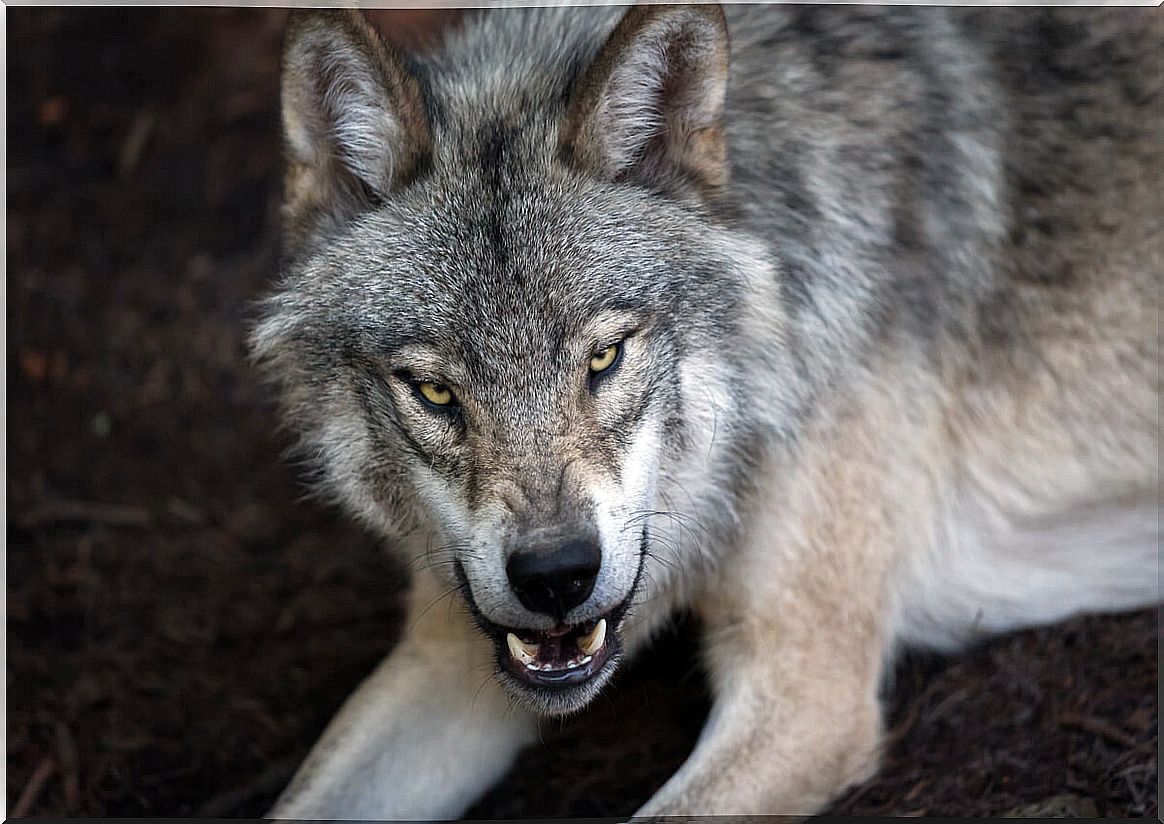Agonistic Behavior: Definition And Examples

Aggression is present in the lives of all animals, either physically or indirectly. In ethology, any social fighting behavior is called agonistic behavior and, although it may not seem like it, it has an indispensable function for survival.
Humans have devised a series of measures to control the behavior of individuals without having to resort to aggressiveness. Contrary to what it may seem, animals also have fight avoidance mechanisms, but these become necessary in very specific contexts. Here we tell you what functions they fulfill.
What is agonistic behavior?
Agonistic behavior can be defined as that which is destined to harm another animal. This also includes aggressive control behaviors, although they are not physical per se .
According to the ethologist Konrad Lorenz, this agonistic behavior can be classified in two directions:
- Intraspecific: it is an aggression directed at individuals of the same species. Here we find, for example, behaviors of dominance, competition for food and also for sexual partners.
- Interspecific: here the aggression is directed towards members of other species, such as predatory behavior, defense or competition for resources and territory.
However, agonistic behaviors do not have to be direct aggression. Many times, the confrontation between individuals in the group can lead to its dissolution, so threats and other techniques are usually the first signs of agonistic behavior before giving way to the physical.

Some examples of agonistic behavior
As we have said, these behaviors are not reduced to mere aggression. Below you will find some examples that will give you a clear idea of what functions this way of acting has in nature.
Defense of the territory
In places where different species or different solitary members of the same coexist, agonistic behaviors are essential to ensure access to resources for survival.
The mere fact of belonging to a group already increases the chances of taking over a territory. It has been documented that certain species of birds watch less and eat more as the group increases, since the individual risk of being predated is much lower.
Another example is that of certain species of primates, such as the capuchin monkeys ( cebus apella) which, thanks to their numerous size and the large expanse of land they cover to find food, are a serious competition for other frugivorous species.
Competition for resources
Competing with other species for a survival resource often results in agonistic behaviors such as territoriality. However, when individuals are from the same group, these behaviors tend to be more aimed at sharing the resource.
For example, an ape in the possession of a piece of food will display a series of agonistic behaviors – such as signs or vocalizations – that indicate that there is a danger of physical aggression. Curiously, this range of behaviors is intended to elicit responses of submission, not of attack, which in turn bring opportunities to share that food.
Hierarchy
The deployment of dominance behaviors has countless functions, both social and in other areas, such as competition for resources or the search for a partner.
The size, sex or age are factors that determine the way to organize the hierarchies. For example, agonistic behavior by a large bird towards a small bird in the same flock will lead to submissive behavior, but in the other direction could lead to a fight.

Not everything is attacking
In the human species it is clear that agonistic behaviors encompass an almost uncountable number of behaviors. But, strange as it may seem, once we get closer to the complex world of animal communication, these signals are sometimes not that different from ours.
Once again, we can conclude that the barriers between species are finer than originally thought. How far will the responses of living beings go?







